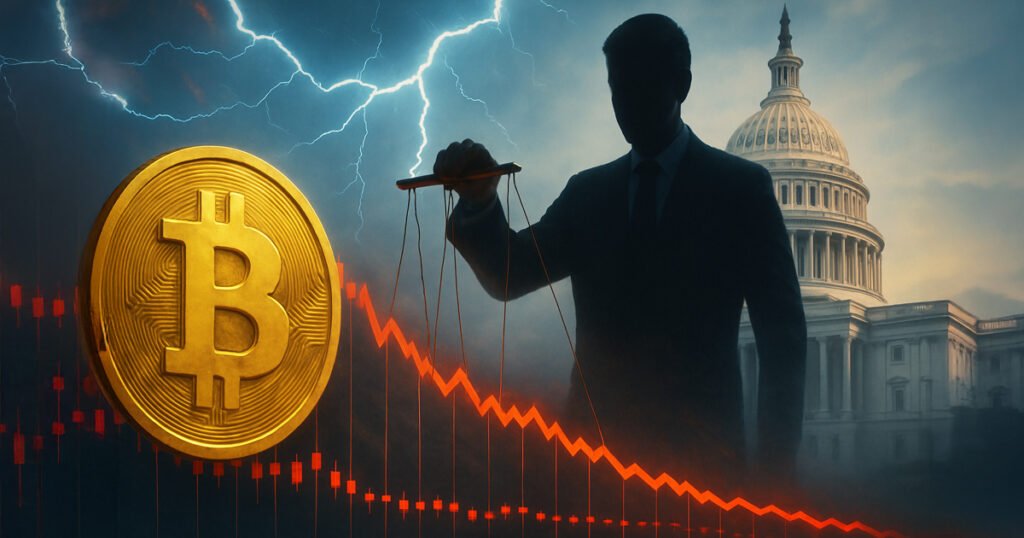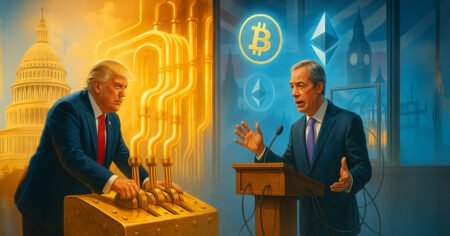The Big Bitcoin Short: An In-Depth Analysis of Insider Trading Allegations
In a high-stakes maneuver weeks ago, a trader shorted Bitcoin just minutes before President Trump announced tariffs, securing a payout estimated between $160 million to $200 million. As this story unfolded, crypto investigator "Eye" largely shaped the narrative with his insights into wallet activities tied to Garrett Jin, suggesting that Jin could be a front for a more extensive insider trading network. However, amid safety concerns and unsubstantiated allegations regarding connections to World Liberty Financial (WLFI), Eye decided to step back from the investigation on October 14, leaving many questions unanswered.
Eye’s examination indicated that the wallet connected to Jin might serve as a channel for illicit information exchange, potentially involving insider knowledge about upcoming policy changes. He posited that while Jin may not be the principal actor in this unfolding drama, the exchange provided a basis for tracing more significant insider trading activities. The investigation highlighted the role of named parties, including WLFI co-founders Zach Witkoff and Chase Herro, who have ties to Donald Trump Jr. Complicating matters further, significant fluctuations in WLFI token prices just hours before the tariff announcement raised eyebrows and fueled speculation about insider trading dynamics in the market.
The aftermath of the Bitcoin short raised significant concerns within the crypto community. Liquidations across various platforms reached approximately $19 billion within a single day, marking a historical record. Investigative analyses, including those from online commentator CoffeeZilla, focused on the critical one-minute gap between the final addition to the Bitcoin short and the tariff announcement—sparking debate over whether Jin had access to nonpublic information when making his trading decision. Despite repeated denials from Jin himself, the circumstances surrounding the incident have kept scrutiny alive in industry discussions, culminating in new trades being executed before regulatory bodies could step in.
In defense, Garrett Jin asserted that his trading strategy was based on macro and technical analysis rather than insider information. His five-point justification outlined several market indicators, including overbought signals in markets and a shift in U.S.–China trade relations leading up to the trading date. Despite this, allegations persisted, fueled by concerns regarding the ties he has with companies and personalities connected to political figures. Jin’s complexity as a trader was further complicated by his previous management of BitForex, an exchange that faced regulatory issues prior to its abrupt closure. Several transactions and his subsequent modifications to online profiles have only intensified scrutiny over his motives and affiliations.
As the investigation has progressed, the regulatory landscape surrounding these trades remains murky. Bitcoin trading operates under the purview of the Commodity Futures Trading Commission (CFTC), while the Securities and Exchange Commission (SEC) oversees securities-related issues. This divide creates uncertainty regarding potential repercussions for insider trading or market manipulation, leaving traders like Jin cautious and on alert as they navigate this complex environment. As of October 15, no formal action from U.S. regulatory bodies had been launched in connection with the events of October 11.
Despite the lack of regulatory intervention, public interest remains high. The intricate ties between wallets, traders, and public figures create a narrative rich in intrigue. Eye’s allegations regarding WLFI remain largely unaddressed by those involved, and many details connecting Jin’s trading activities to potential insiders are yet to be clarified satisfactorily. The industry watches closely as speculations about the implications of this situation unfold, noting how regulatory bodies may ultimately choose to respond. It remains uncertain how the story will evolve, but one thing is clear: the intersection of cryptocurrency and politics creates a dynamic landscape fraught with challenges and opportunities.
This investigation’s outcome could have long-lasting effects on market perceptions and regulatory policies as they relate to cryptocurrencies and insider trading. As the crypto space continues to mature, the vigilance displayed by both investigators and regulators highlights the necessity for a transparent and fair trading environment. The need for comprehensive reforms in policy and oversight is evident, as the narrative surrounding the "Big Bitcoin Short" continues to captivate both seasoned traders and casual observers alike.

















